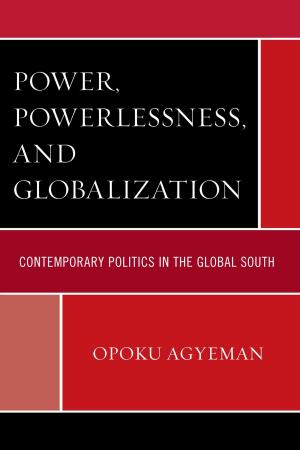Between Democracy and Technocracy
Regulating Administrative Guidance in Japan
Nonfiction, Social & Cultural Studies, Political Science, International| Author: | Franklin Barr Lebo | ISBN: | 9781498562225 |
| Publisher: | Lexington Books | Publication: | May 1, 2018 |
| Imprint: | Lexington Books | Language: | English |
| Author: | Franklin Barr Lebo |
| ISBN: | 9781498562225 |
| Publisher: | Lexington Books |
| Publication: | May 1, 2018 |
| Imprint: | Lexington Books |
| Language: | English |
Classically, studies of the Japanese government are both tantalizing and frustrating as scholars standing outside of the system draw conclusions from significant events like crises, disasters, and moments of reform. This has led to a sense of mystery as scholars have developed sophisticated competing theories about how the system actually operates often with resigned comments that there is a black curtain (kuromaku) drawn over the system. The primary challenge is gaining access to the actual process of policymaking on a daily basis given the seemingly impenetrable nature of the bureaucracy. This study is unusual as it cracks open the curtain to see the wheels and rotating gears along with those pulling the levers. Specifically, through the Maureen and Mike Mansfield Fellowship program, the only congressionally authorized opportunity allowing American officials to be placed directly inside a foreign government, the reader is given a firsthand account of these machinations. Through their eyes, readers will be introduced to Japan’s messy policymaking process in telecommunications regulation, pharmaceutical approvals, diplomatic relations, and much more. This approach also allows the author to refine existing theories of Japan’s bureaucratic elite and assess the weak system of control exercised over them by the National Personnel Authority (NPA). This understudied agency is the last vestige of MacArthur’s legacy as the Supreme Commander of the Allied Powers in Japan following World War II. Thus, this study ambitiously hopes to lend a realistic glimpse into the only developed, non-western, industrialized democratic state in the world. More boldly, this study intends to lend a greater appreciation of the complex tug-of-war between democracy and technocracy in other national contexts.
Classically, studies of the Japanese government are both tantalizing and frustrating as scholars standing outside of the system draw conclusions from significant events like crises, disasters, and moments of reform. This has led to a sense of mystery as scholars have developed sophisticated competing theories about how the system actually operates often with resigned comments that there is a black curtain (kuromaku) drawn over the system. The primary challenge is gaining access to the actual process of policymaking on a daily basis given the seemingly impenetrable nature of the bureaucracy. This study is unusual as it cracks open the curtain to see the wheels and rotating gears along with those pulling the levers. Specifically, through the Maureen and Mike Mansfield Fellowship program, the only congressionally authorized opportunity allowing American officials to be placed directly inside a foreign government, the reader is given a firsthand account of these machinations. Through their eyes, readers will be introduced to Japan’s messy policymaking process in telecommunications regulation, pharmaceutical approvals, diplomatic relations, and much more. This approach also allows the author to refine existing theories of Japan’s bureaucratic elite and assess the weak system of control exercised over them by the National Personnel Authority (NPA). This understudied agency is the last vestige of MacArthur’s legacy as the Supreme Commander of the Allied Powers in Japan following World War II. Thus, this study ambitiously hopes to lend a realistic glimpse into the only developed, non-western, industrialized democratic state in the world. More boldly, this study intends to lend a greater appreciation of the complex tug-of-war between democracy and technocracy in other national contexts.















